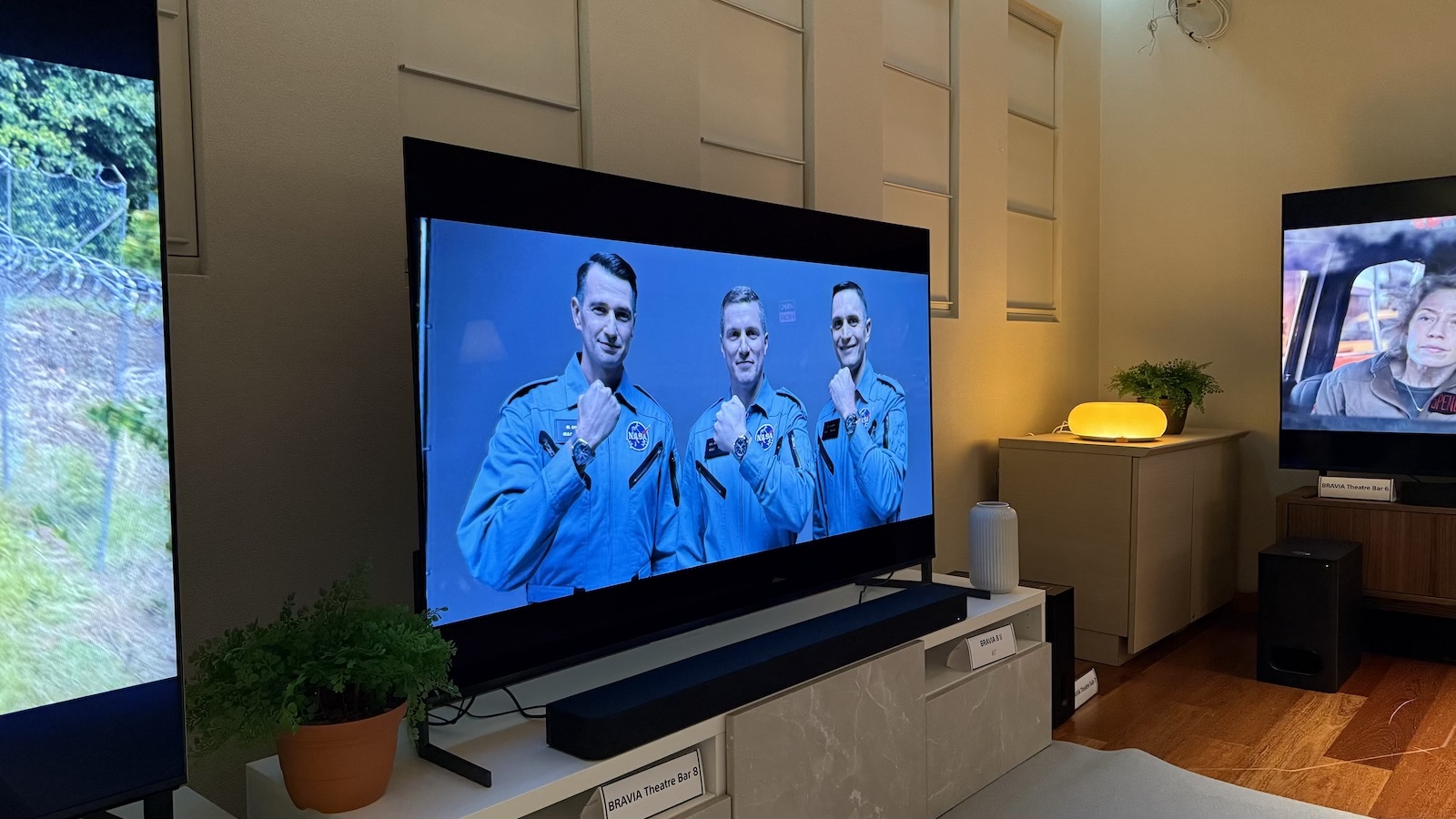Should you buy a Dolby Atmos soundbar this Cyber Monday?
With prices and sizes to suit all budgets, we run down the very best Dolby Atmos soundbars to give your home cinema a lift
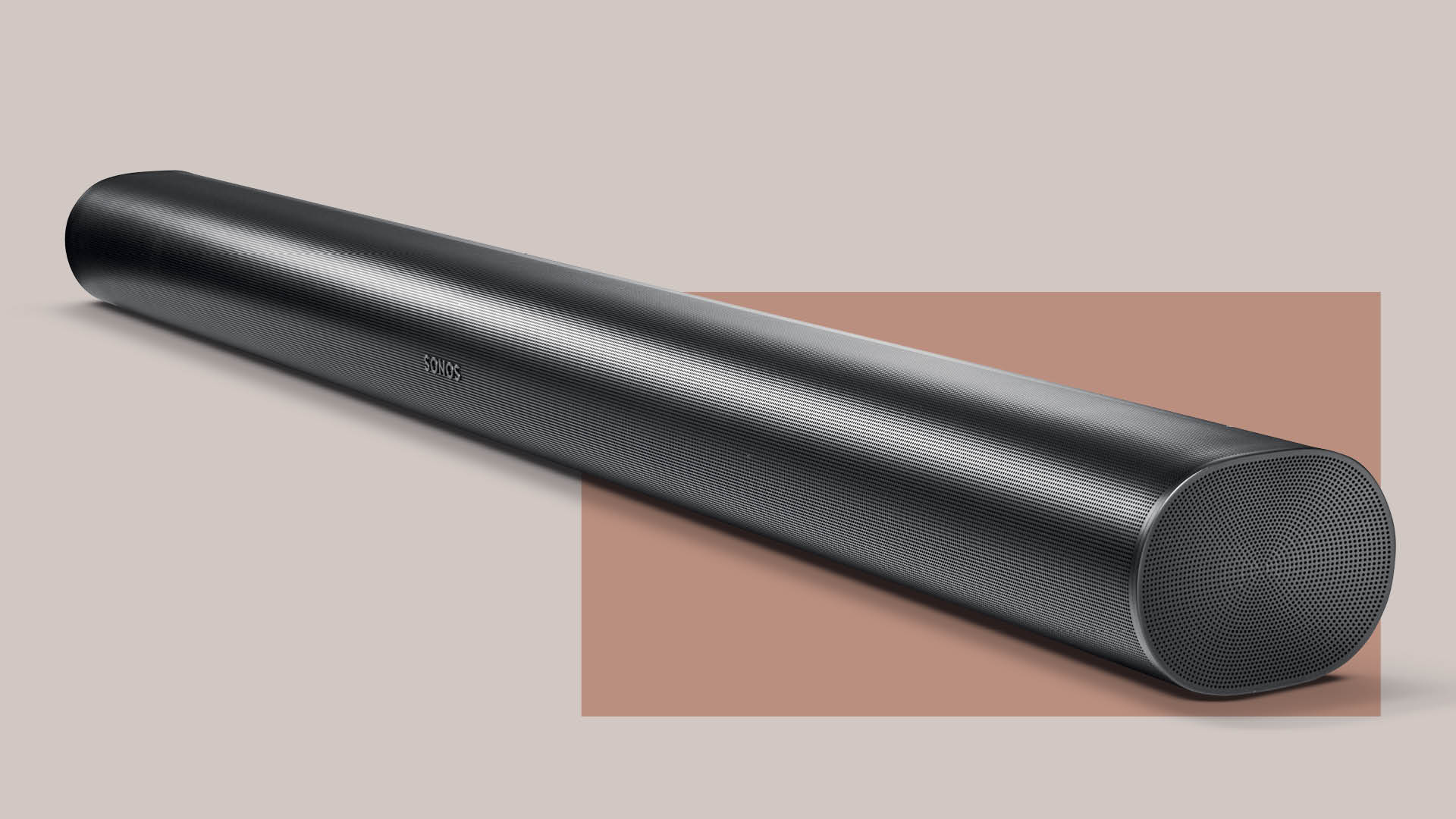
If you enjoy firing up your favourite streaming app, kicking back and appreciating your home cinema at its very finest, then no doubt at some point you have contemplated upgrading your TV’s built-in speakers to a surround sound system only to baulk at the cost and clutter implications.
Fortunately, Dolby Atmos soundbars can deliver cinematic audio in spaces that speaker packages could only ever dream of, at a fraction of the price. And, with a well-considered purchase you can make a powerful sonic impact on your living room for very little outlay.
Gone are the days when the only way to create an immersive audio experience meant turning your living room into the speaker version of Stonehenge. Soundbar technology has come a long way, and you can now take advantage of a wide variety of Dolby Atmos-enabled soundbars designed specifically to envelop you with sound, no matter your size or budget requirements. To help you achieve the AV system of your dreams, we have hand-picked our favourite recommendations for the very latest and greatest Dolby Atmos soundbars along with the most up-to-date pricing available online. Enjoy!
Best Cyber Monday soundbar deals
- UK: Bose Smart Soundbar 900
£899£799 at Amazon (save £100) - UK: Sonos Arc
£899£685 at Sevenoaks (save £200) - UK: Sonos Beam (Gen 2)
£449£345 at Amazon (save £100) - UK: Sony HT-A7000
£1299£1099 at Richer Sounds (save £200) - UK: Denon DHT-S216
£199£139 at Amazon (save £60)
- US: Roku Streambar:
$129$79 at Amazon (save $50) - US: LG SP8YA
$800$400 at Best Buy (save $400) - US: Sony HT-G700
$599$388 at Amazon (save $211)
What is Dolby Atmos?
Dolby Atmos is an object-based audio format that expands upon a traditional surround set-up by adding channels to produce sound from overhead. Filmmakers use the technology in the mixing stage to place sounds and voices at exact points in the soundfield rather than simply assigning them to channels, creating an enveloping soundstage even from the confines of a small soundbar.
As well as adding thrilling movement to action sequences, Dolby Atmos enhances perspective and immersion in both effects and music. Most premium Atmos soundbars use upward-firing drivers to disperse sound vertically and reflect it off your ceiling – giving the effect of having overhead speakers and adding realism to vertical sounds such as planes and helicopters.
A slew of excellent Dolby Atmos soundbars has recently hit the market, and there is now a range of models to suit all budgets. Some pocket-friendly models offer ‘virtual’ decoding of the format, using psychoacoustics instead of upward drivers. While realistic overhead sounds are a bit of a stretch for these more affordable Dolby Atmos soundbars, having the ability to decode the format well means that you will still find that movies and games have more compelling and nuanced soundtracks.
And as a bonus, because the majority of up-to-date Dolby Atmos soundbars have network connectivity, you can also benefit from upgrading your system with streaming features and voice control.
Where can you watch Dolby Atmos movies?
There’s plenty of Dolby Atmos content available, some of which you may already have access to and not be taking advantage of. Disney Plus has a generous selection of Dolby Atmos programming, including the back catalogue of the Marvel and Star Wars franchises. Meanwhile, Netflix’s top tier supports Dolby Atmos on Originals such as Squid Games, Roma and Uncut Gems.
Many titles available through Apple TV+, including Apple originals, support Dolby Atmos, and the Apple TV store offers possibly the largest selection of Atmos movies to rent or buy digitally.
Amazon Prime Video, Vudu and HBO Max also offer Atmos programming, though to a lesser extent. You can spot Atmos content by looking out for the Dolby Atmos logo or simply searching ‘Dolby Atmos’, but for starters, we can recommend Amazon’s Jack Ryan TV series and HBO’s blockbuster releases, including Dune and Wonder Woman 1984. However, it is worth noting that the HBO Max app does not support Dolby Atmos on Amazon Fire TV, Android TV, Samsung TVs, VIZIO 4K Smart TVs, Xbox consoles and Xfinity devices.
A more comprehensive selection of Dolby Atmos content is also accessible to owners of a Sky Q box and relevant subscription package via Sky Cinema and the Sky Store. Away from films, live sports (mainly football) broadcasts are available to subscribers of BT’s top-tier Total Entertainment package or Sky Q.
Many PC and Xbox games support Dolby Atmos, too, including Ori and the Will of the Wisps, Call of Duty: Warzone, Gears 5, Forza Horizon 5, Battlefield 1 and Call of Duty: Black Ops – Cold War.
Of course, if you’re still partial to the physical disc, then you will find Atmos on many Ultra HD 4K Blu-ray releases, too. Dune, No Time to Die, Blade Runner 2049, Baby Driver, Mad Max: Fury Road, Bohemian Rhapsody, 1917, Ready Player One and Tenet are among the best releases of recent years.
The best Dolby Atmos movie scenes to test your home cinema sound
Which Dolby Atmos soundbar should you buy?
So, we have explained what Dolby Atmos is and where it is available; now we turn to the meat of the matter: which Dolby Atmos soundbar should you buy this Amazon Prime Day? Below, you will find our favourite models along with the latest, lowest prices.
Should you buy the Sonos Arc?
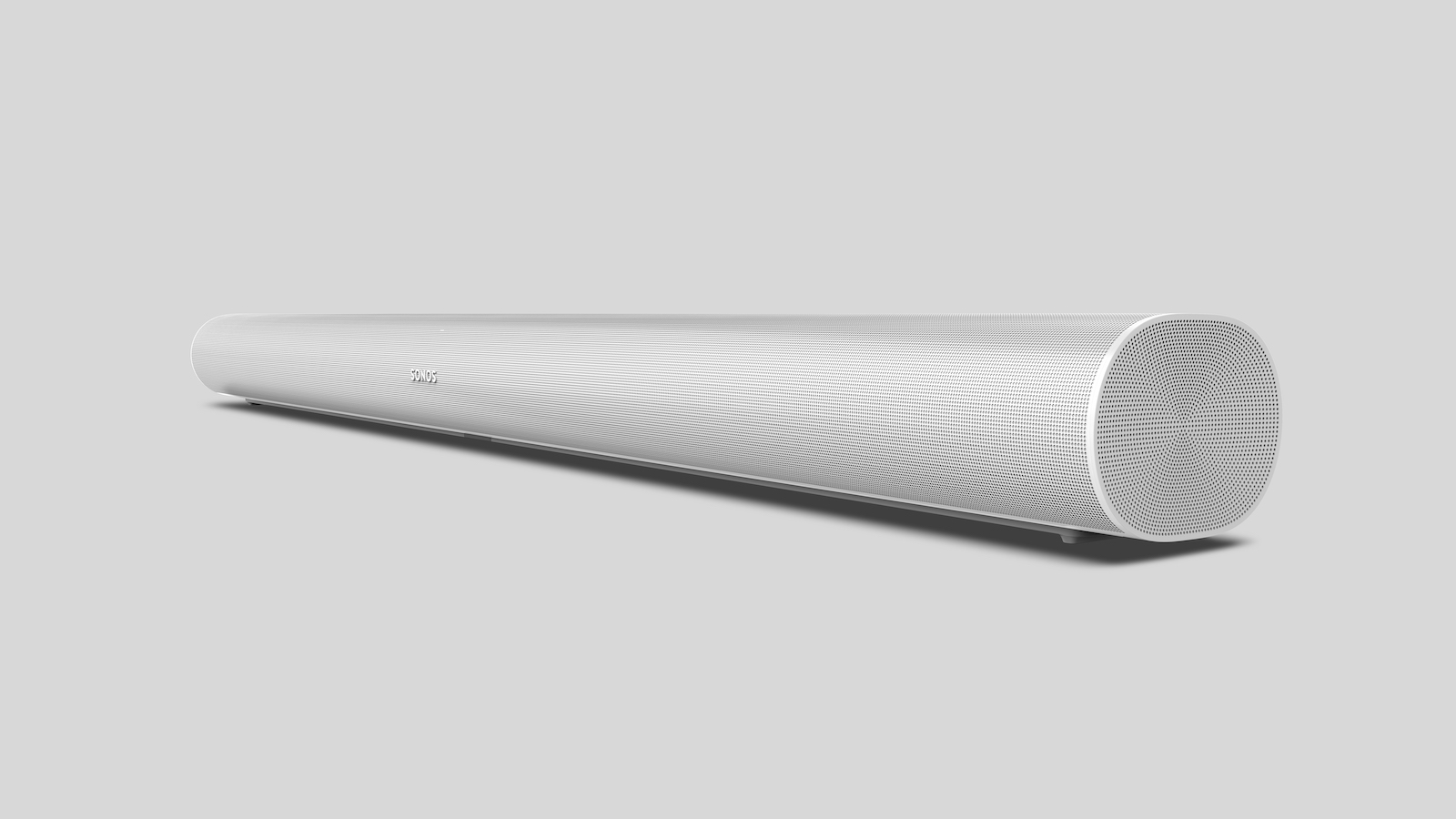
Launched in 2020, the Arc is Sonos's flagship soundbar and is the only model from the brand to deliver Dolby Atmos with vertical speakers. It sits above the brand's virtual Atmos bar, the Beam (Gen 2), and budget bar the Sonos Ray, employing 11 drivers to create its immersive soundfield. Several of these drivers are upward-firing and angled into your room to bounce sound off your walls and ceiling and create one of the most convincing Atmos performances you can get from a soundbar.
There's Apple AirPlay 2 connectivity for easy streaming, and eARC for Dolby Atmos from compatible TVs. You can have a choice of voice assistants, too, with Google Assistant and Amazon Alexa both built-in. It's simple to set up, slots into the Sonos ecosystem as well as you would expect and delivers detailed, dramatic audio for a very reasonable price, transporting you straight to the heart of the action.
Surround effects are expertly placed, and there's excellent dynamism and good weight to the sound too. Tonally, it's nicely balanced if you want to listen to music, though lovers of low-end may wish to explore adding the optional Sub (£699 / $699 / AU$999) or holding out the hotly rumoured mini-Sub. But, there is no doubt that this is a hugely impressive Dolby Atmos soundbar for the money, even on its own.
Why should you buy the Sonos Arc Dolby Atmos Soundbar?
The Sonos Arc picked up Product of the Year at the What Hi-Fi? Awards in 2020 and retained Award-winning status in 2021 in the face of stiff competition. Its 'true' Dolby Atmos performance is still above and beyond anything we have heard for the same money over the past two years, even considering its 2021 price increase – and it looks unlikely to be superseded by a new Sonos model any time soon. Discounts are more likely to be found for the white colourway but generally, the Arc is rarely reduced, so if you spot a discount, pounce. You will see the latest, lowest prices below.
Read the full Sonos Arc review
Should you buy the Sony HT-A7000?
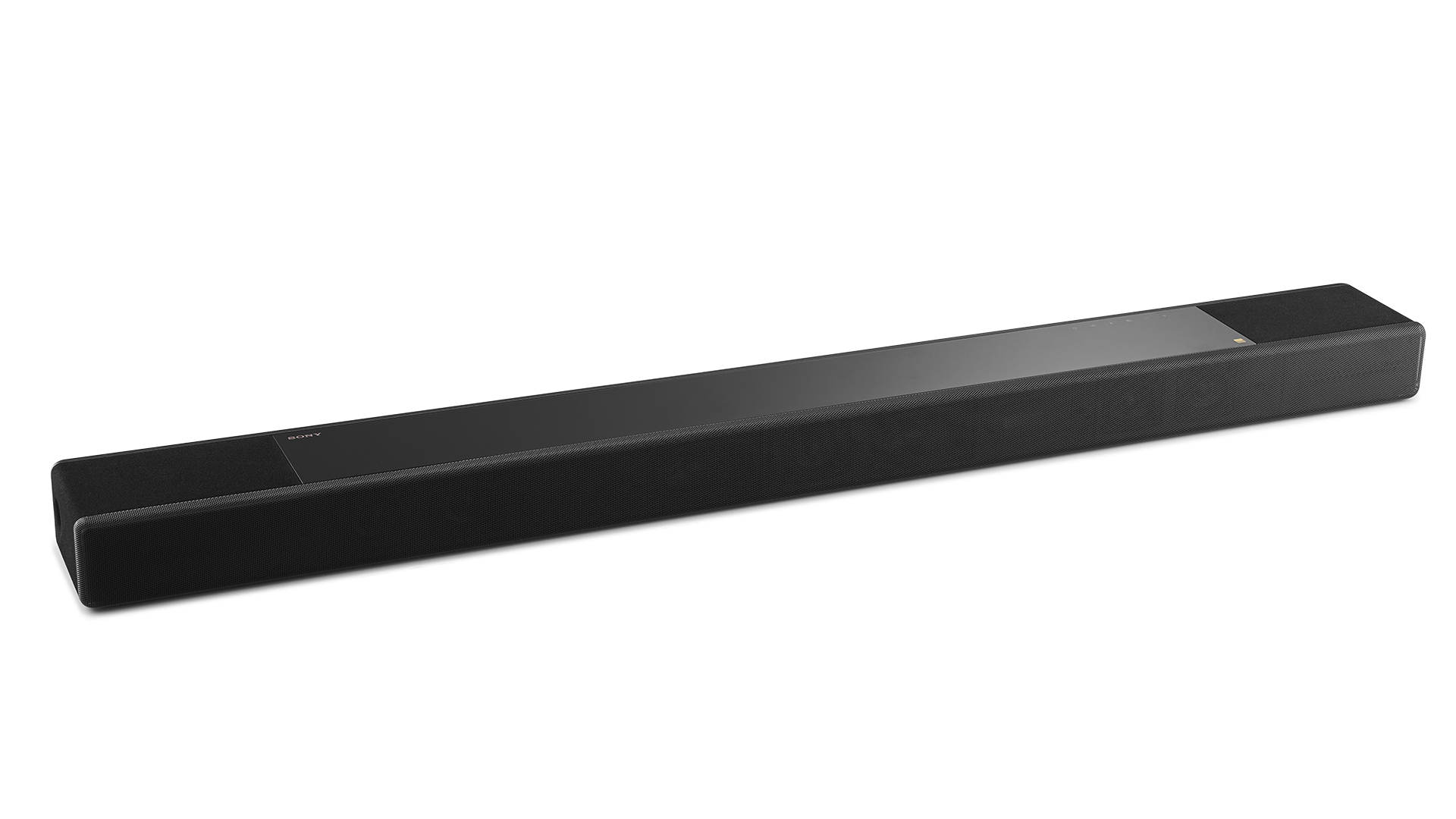
Sony has excellent form with soundbars, and the 2021 What Hi-Fi? Award-winning HT-A7000 is the company's best yet. A 7.1.2 slab of sound, this Dolby Atmos soundbar packs two up-firing speakers, two beam tweeters, five front-facing drivers and a built-in dual subwoofer into a single chassis. Using a combination of driver placement and psychoacoustic techniques, the Sony HT-A700 delivers a broad and high soundstage, whether you’re watching immersive content or not, while retaining musicality, presence and detail.
In terms of supported audio formats, the A7000 excels itself by including Dolby Atmos (in both the Digital+ and TrueHD formats), DTS:X, LPCM, hi-res wireless audio and Sony 360 Reality Audio.
It’s as packed with streaming smarts as it is stuffed with speakers, with Spotify Connect, Apple AirPlay 2, and Google Chromecast all on board, and integration into a multi-room system – with Amazon Alexa, Apple HomeKit and Google Home all supported.
Alongside two HDMI 2.1 pass-through sockets capable of handling 8K@60Hz, 4K@120Hz, and Dolby Vision HDR, there are ports for eARC, analogue and optical audio inputs, and USB type-A. There’s also an analogue output for Sony’s Acoustic Center Sync, which lets a compatible Bravia TV become part of the soundbar’s centre channel when the two are connected using the supplied cable.
Why should you buy the Sony HT-A700 Dolby Atmos Soundbar?
In terms of height and precision, the Sony HT-A700’s performance is similar to that of the Sonos Arc, but the width of the soundstage and its forward projection is more convincing. The integrated sub is also one of the most impressive we’ve heard, with a taut, controlled and powerful performance.
Packed with next-gen features and streaming options, the A7000 is an incredibly competent, future-proofed performer that sets a new benchmark for Dolby Atmos soundbars. It's still relatively new, and discounts are rare. The latest, lowest prices are below – if you spot a deal, grab it while you can.
Read the full Sony HT-A7000 review
Should you buy the Sonos Beam Gen 2?
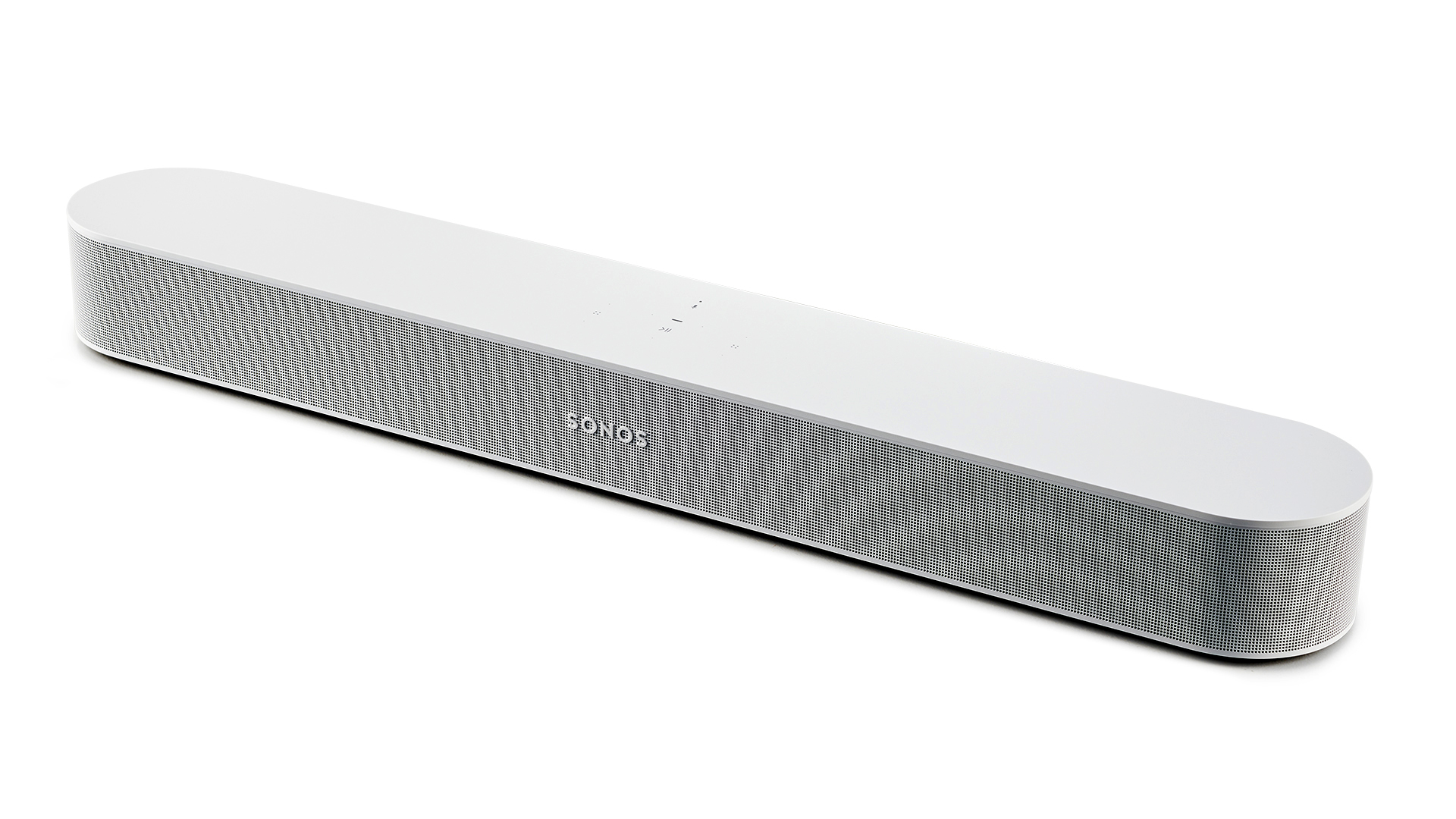
Delivering Dolby Atmos from a small chassis is no mean feat, but the 2021 What Hi-Fi? Award-winning Sonos Beam Gen 2 achieves a convincing, immersive performance without so much as a vertical speaker in sight. Instead, when watching Atmos content, two of the soundbar's five front-facing arrays are dedicated to reproducing overhead and surround sounds. With its hefty processing power, the Sonos Beam Gen 2 uses psychoacoustic HRTF (head-related transfer function) technology to give the impression of height without needing to get genuinely vertical.
Not that many soundbars at this price point come with networking capabilities, but this being a Sonos product, the Beam Gen 2’s ability to integrate into a wireless multiroom system is fundamental to its design. This means you can stream to the Beam Gen 2 from a handheld device using Apple AirPlay 2, and Spotify Connect is built-in too. There will also be a forthcoming upgrade to add support for Amazon Music Ultra HD audio, which will give access to lossless 24-bit/48kHz tracks and Dolby Atmos Music.
Why should you buy the Sonos Beam Gen 2 Dolby Atmos Soundbar?
While genuine overhead sounds are perhaps a stretch too far for this petite performer, its virtual delivery of the Atmos format outstrips any similarly priced soundbar and even a few that are more expensive. The Beam Gen 2 offers an enveloping, spatial soundscape with rich, detailed audio and tangible motion and depth.
Unlike some of the more premium soundbars listed here, there is no support for Dolby Atmos rival DTS:X or additional HDMI inputs. Still, it speaks volumes for the performance of the Beam Gen 2 that, despite these constraints and the lack of upward drivers, if space and budget are limited, there isn't a better Dolby Atmos soundbar that we would recommend at this price.
As with the Arc, the white Beam Gen 2 is more likely to be found with decent reduction, but since the soundbar was released last September, Sonos has been fairly rigid with its pricing. Also, considering the company introduced the cheaper, non-Atmos Sonos Ray a few months ago, big discounts on the Beam Gen 2 are unlikely. That said, it's well worth its RRP, and if it drops by even a fiver, you will see that in the deals box below.
Read the full Sonos Beam Gen 2 review
Should you buy the Bose 900 Smart Soundbar?
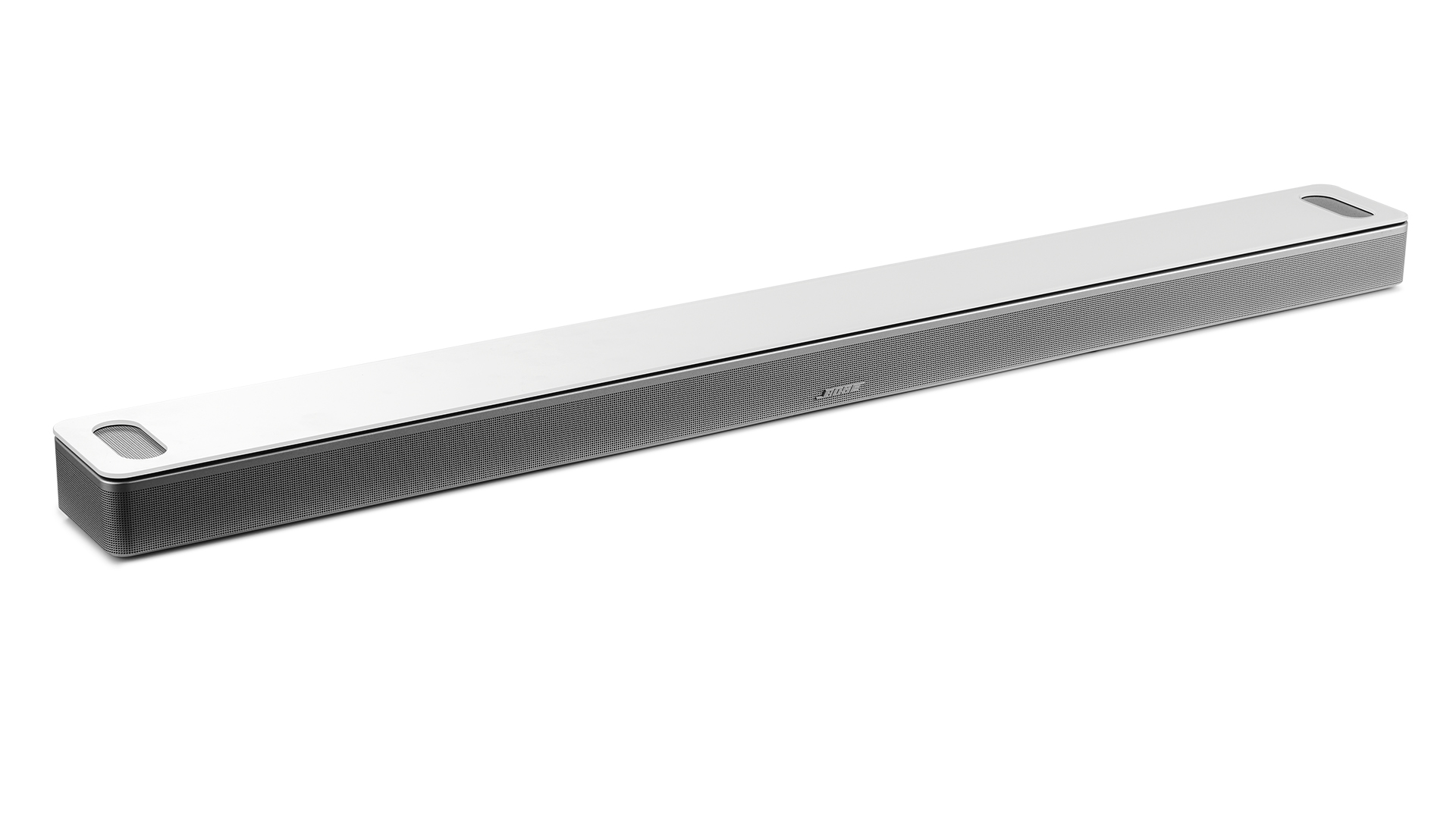
Bose's aesthetic sensibilities mean that the Smart Soundbar 900 has a more modern and refined appearance than most of its competition, with a wraparound metal grille and polished, impact-resistant tempered glass top.
Underneath the bodywork, Bose's first Dolby Atmos soundbar sports has nine channels of amplification. As well as the pair of height drivers, there is one centre tweeter flanked by four racetrack transducers. Despite the appearance of its completely wrap-around grille, there are no side-firing drivers. Instead, two further transducers are positioned at the far left and right that use Bose's PhaseGuide technology. This gives the impression of placing certain sounds at either side of the listening position.
As you would expect from Bose, there are plenty of connectivity options and features on board, with a single HDMI eARC port, an optical in, ethernet and a USB socket. For streaming, there's wi-fi, Bluetooth 4.2, Spotify Connect and AirPlay 2. Moreover, from January 2022, there will also be Chromecast on board by way of a retroactive firmware update. There's also support for both Amazon’s Alexa and Google assistants. The on-board Alexa lets users make and receive intercom calls to other Bose smart products and Amazon Echo devices or make hands-free calls to anyone from within your contacts list.
Why should you buy the Bose 900 Smart Soundbar?
The Bose Smart Soundbar 900 is an entertaining, feature-packed, sophisticated-looking Dolby Atmos soundbar. With an impressively wide soundfield, clear forward projection and bright character, many listeners will be very pleased with its responsive and cinematic performance. However, it can be inconsistent in its effectiveness and occasionally adds its own organisational structure and tonal colour to content, particularly noticeable when listening to music.
While it doesn't have the height, transparency, musicality, and dynamics of the similarly priced Sonos Arc, for those already invested in the Bose ecosystem, the Smart Soundbar 900 would be a smart choice.
Read the full Bose Smart Soundbar 900 review
Should you buy the LG SP11RA?
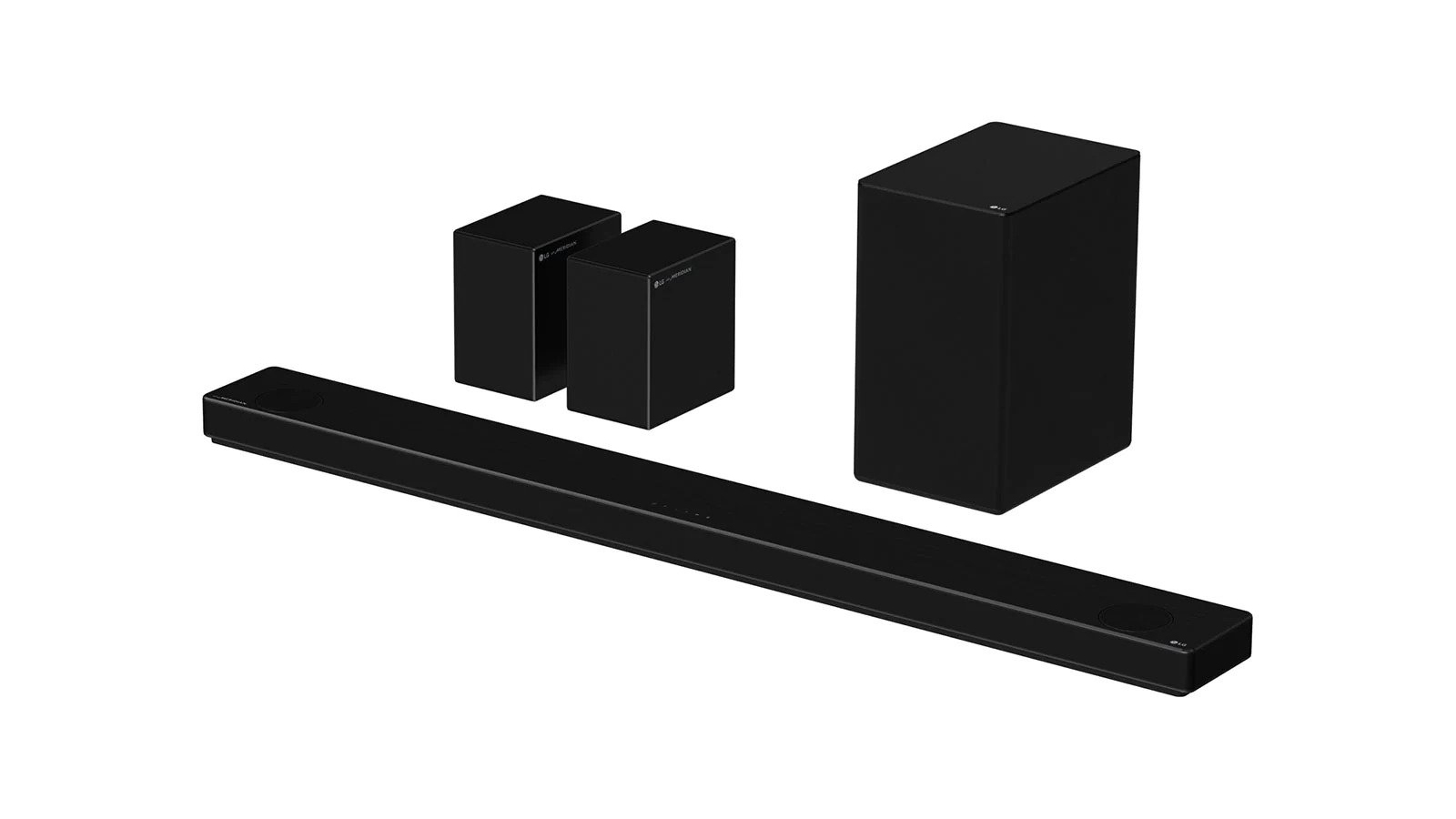
The SP11RA is a significant investment in terms of space as well as money – this package includes a separate sub and two surround speakers, and the soundbar itself clocks in at 144cm long. However, it’s still a more convenient and less overwhelming undertaking than building a true home cinema system that matches up to the LG’s 7.1.4 channels of excellent Dolby Atmos action.
The main bar has three front-facing channels, two ‘surround’ channels at either end of the bar, and a pair of upward-firing height speakers on the top surface. The wireless sub houses an 18cm driver and rear port, while the rears each have a front and upward-firing driver.
At the rear is an HDMI-out port that supports eARC, plus two HDMI 2.1 inputs with 4K Dolby Vision pass-through. There’s also an optical input and a USB port, the latter for connection to a mass storage device. Meanwhile, there is wireless connectivity via WiFi and Bluetooth 5.0, as well as compatibility with both Alexa and Google Assistant.
Why should you buy the LG SP11RA Dolby Atmos Soundbar?
The SP11RA is surprisingly agile, with a detailed top end and easy-going character. It hasn't got the robust low end of Samsung's Dolby Atmos soundbars or the precision of Sonos or Sony, but it does offer an even and immersive listening experience with a tech spec that is one of the most comprehensive and future-proofed we have seen.
All those drivers don’t come cheap, though, so if you fancy maximising your sound per pound ratio, we would suggest keeping an eye out for discounts, which you will see below.
Read our full LG SP11RA review
Should you buy the Samsung HW-Q950A?
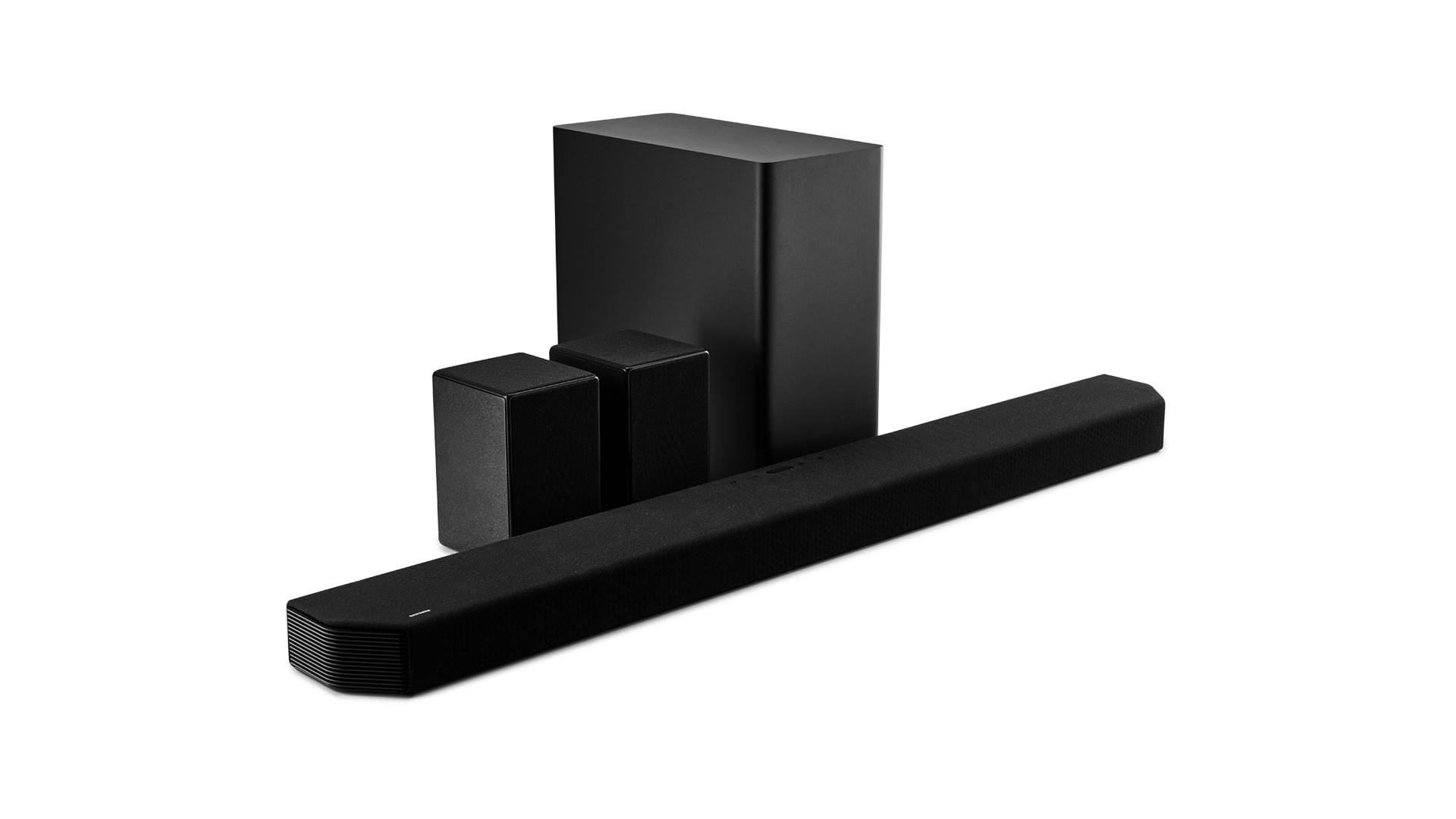
With a generous 22 drivers delivering 11.1.4 surround sound, the HW-Q950A offers the greatest number of channels of any soundbar on the market right now, as well as 3D audio format support from both Dolby Atmos and DTS:X.
The Q950A has two HDMI inputs and one output (with support for eARC), plus optical-in for older TVs. The soundbar’s microphone allows for commands to the built-in Amazon Alexa voice assistant and can also be used to monitor background levels, as the Q950A has a nifty feature to boost the centre channel for clearer dialogue if ambient noise increases – though we doubt you will feel the need to use it.
At 130cm long, the main unit of the HW-Q950A isn’t tiny, but it’s nevertheless shorter than many other flagship Dolby Atmos models available at the moment. Inside the left, centre and right channels sit alongside a pair each of upward-firing, surround and wide surround drivers. The separate sub houses a single eight-inch speaker while the wireless surround units each contain three drivers - one facing towards the front of the room, one upwards and the last one towards the listening position.
And if you happen to own a 2021 Samsung TV, you can further enhance the driver count by using a Samsung feature called ‘Q-Symphony’, which allows the TV's internal speakers to work in conjunction with the soundbar package to add more height and space to the soundfield.
Why should you buy the Samsung Q950A Dolby Atmos Soundbar?
With plenty of sonic vigour, features and speakers, the Q950A offers a potent listening experience. While it’s not the most nuanced or spacious performer, those looking to splash out on a Dolby Atmos soundbar that can deliver big, punchy audio and supremely clear vocals are unlikely to be disappointed by the Q950A.
What's more, Samsung is offering considerable discounts off the Q950A's £1600 / $1800 / AU$2100 launch price. You will see the new deal price below.
Read our full Samsung HW-Q950A review
Should you buy the B&W Panorama 3
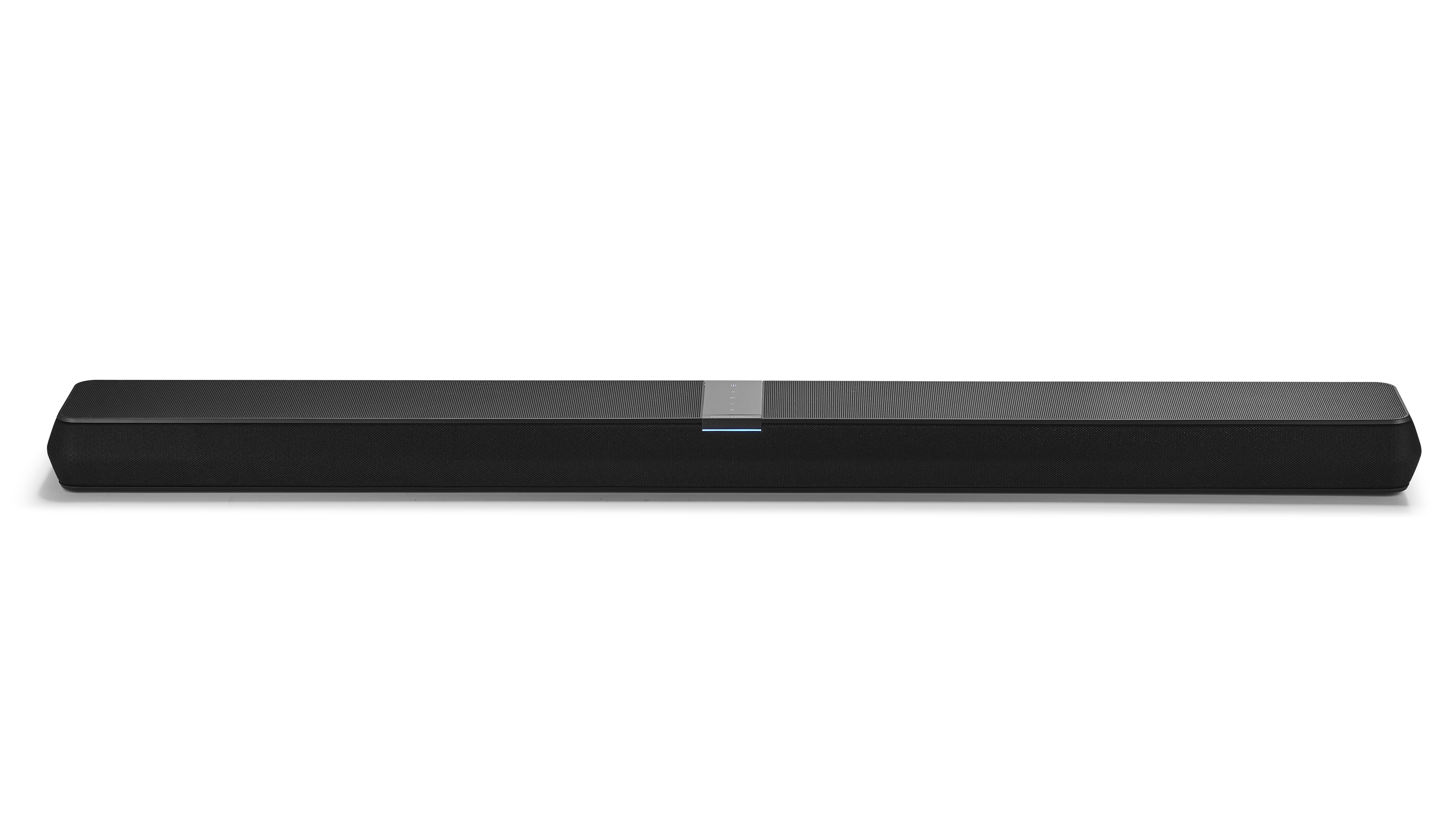
The minimalist, sleekness of the Bowers and Wilkins' Panorama 3 Dolby Atmos soundbar belies its fairly unique take on home cinema sound. Packed inside its ultra low profile chassis are 13 individual driver units powered by ten 40-watt amplifiers in a 3.1.2 configuration. Across the front, in a Left-Centre-Right arrangement, each channel group includes twin 5cm midrange drivers partnered by decoupled 19mm titanium-dome tweeters. Meanwhile, two angled 5cm drivers are on the top to deliver height effects.
Unusually, the upper surface also houses twin 10cm subwoofers mounted in an acoustic enclosure. Few soundbars include dedicated bass-channel drivers, let alone ones of this size, and Bowers & Wilkins says that, by placing them in this way, the Panorama 3 can achieve a "deep, extended bass with no need for an external subwoofer". And even if you wanted to add a sub, you wouldn't be able to because B&W is so confident in the Panorama 3's capabilities that there are no extra bass or surround speakers available to expand it into a more traditional surround set-up.
At the rear is a single HDMI eARC port and an optical digital input for older TVs. Streaming is well catered for with AirPlay 2, aptX Adaptive Bluetooth and Spotify Connect, while high-resolution listening is supported via the Bowers & Wilkins Music App, which gives listeners access to streaming services including Tidal, Deezer and Qobuz, with the number of supported platforms set to expand later this year.
Why should you buy the B&W Panorama 3 Soundbar?
Whilst the Panorama 3 can't deliver resonant cinematic rumble, there is tangible warmth, depth and weight to its delivery that sets it apart from other soundbars. Its soundstage isn't as immersive as other models in its launch price category, but if you have already bought into the B&W ecosystem or you are a staunch minimalist on the lookout for the most understated of Dolby Atmos soundbars, then keeping an eye out for a reduction on the Panorama 3 could be well worthwhile.
Read the full B&W Panorama 3 review
Should you buy the Bluesound Pulse Soundbar+
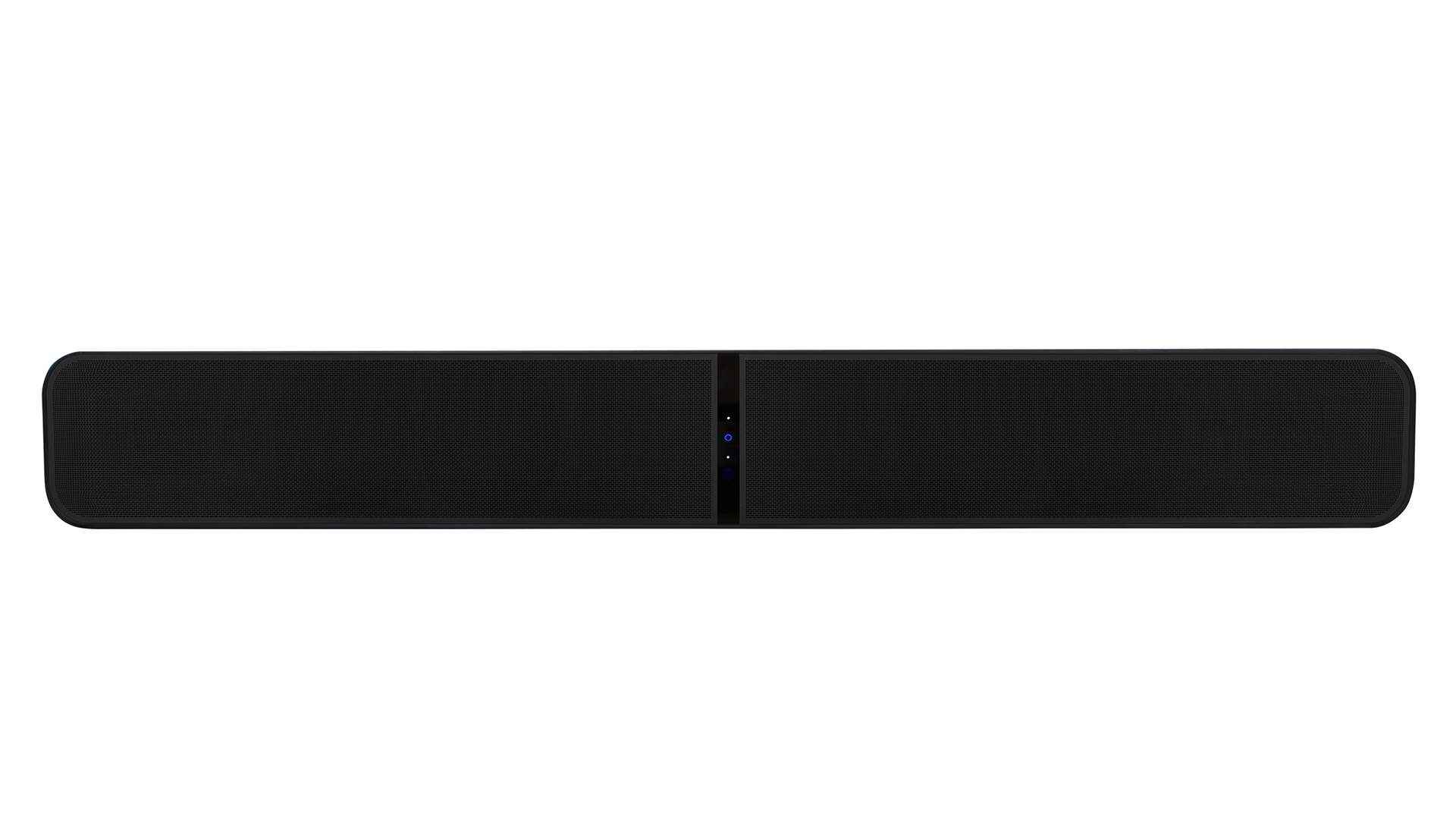
The Bluesound Pulse Soundbar Plus bears more than a passing resemblance to the company's previous models, but internally it sports a custom-specified ARM Cortex A53 quad-core chipset that the company says processes audio up to eight times faster than previous generations and, most importantly, can handle virtual Dolby Atmos.
Its Atmos delivery is virtual because the two sets of 25mm tweeters, 5cm midrange drivers and 10cm woofers in the Bluesound Pulse Soundbar Plus are front-facing and, being larger in diameter than those in most competing models, give the Pulse Soundbar+ its distinctive slim, tapered, tall build.
Potential buyers should note that at 14cm high, the Bluesound Pulse is taller than your average soundbar and, when placed on the same surface as a TV, will almost certainly block part of the screen. But Bluesound is well aware of this and includes a wall-mounting bracket in the box.
Physical inputs include HDMI eARC, optical, 3.5mm analogue and USB A, as well as an ethernet port and RCA output for an external sub. The soundbar can also connect wirelessly, to a pair of Pulse Flex 2i speakers for surround sound and/or a Pulse Sub+ for extra bass available for additional purchase.
There is streaming on board courtesy of Apple AirPlay, two-way aptX HD Bluetooth and the BluOS wireless system that integrates with services including Tidal and Spotify as well as supporting hi-res audio file formats.
Why should you buy the Bluesound Pulse Soundbar+ Soundbar?
Although this is virtual Dolby Atmos, there is something substantial and authentic to the presentation of the Pulse Soundbar+, which compensates for a soundstage that’s not as wide or high as some of the competition. While realistic sensations of ‘height’ are a bit beyond the scope of the Pulse Soundbar+, given its lack of upward-firing drivers, there is much more to Dolby Atmos than just sound coming from your ceiling, and the precision, location and movement that the Bluesound achieves is some of the best we have heard from a soundbar. If you are in the market for a soundbar, don't mind wall mounting and are already firmly in the Bluesound camp, then its worth holding out for a discount on the Bluesound Pulse Soundbar+.
Read the full Bluesound Pulse Soundbar+ review
MORE
20 of the best Dolby Atmos movie scenes to test your home cinema sound
Best budget soundbars 2022: excellent, affordable TV speakers
11 of the best spatial audio tracks in Dolby Atmos on Apple Music
Get the What Hi-Fi? Newsletter
The latest hi-fi, home cinema and tech news, reviews, buying advice and deals, direct to your inbox.
Mary is a staff writer at What Hi-Fi? and has over a decade of experience working as a sound engineer mixing live events, music and theatre. Her mixing credits include productions at The National Theatre and in the West End, as well as original musicals composed by Mark Knopfler, Tori Amos, Guy Chambers, Howard Goodall and Dan Gillespie Sells.
